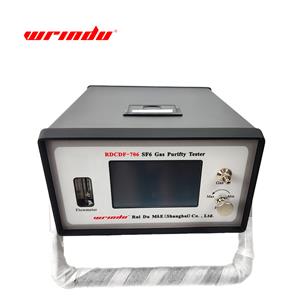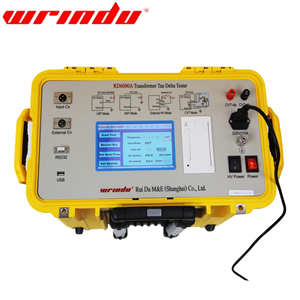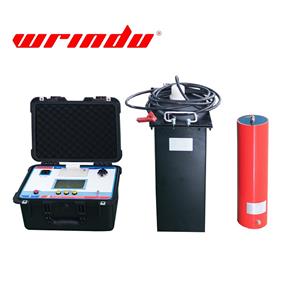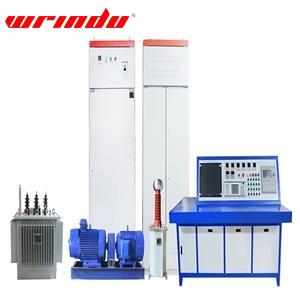HV Cable Testing: Risk and Benefit between DC and VLF Hipot Methods
Why is Hipot Testing critical for High-Voltage Cable Systems?
High-voltage (HV) cables are important of modern power transmission and distribution networks. Over time, their insulation systems, especially cross-linked polyethylene (XLPE) and ethylene-propylene rubber (EPR) degrade due to electrical, thermal, and environmental stresses.
To guarantee continued reliability, insulation integrity must be periodically verified. The high-potential (hipot) test remains one of the most direct methods to evaluate dielectric strength and detect latent defects before catastrophic failure occurs.
Hipot testing can be performed using DC (direct current), AC (power frequency), or VLF (very low frequency AC) voltage. Among them, DC and VLF are the most practical for field use, but their suitability and associated risks differ significantly, especially for aged polymeric cables.
What are the key differences between DC, AC, and VLF Hipot Tests?
Understanding the Three Methods
DC Hipot applies steady-state voltage stress, emphasizing insulation breakdown strength.
AC Hipot reproduces operating stress but requires bulky, high-power equipment—mainly used in factories.
VLF Hipot applies alternating voltage at 0.01–0.1 Hz, simulating AC stress while reducing power demand and insulation stress.
The following are the contrast tables of their differences:
| Item | DC Hipot | AC Hipot | VLF Hipot |
|---|---|---|---|
| Typical Frequency / Waveform | 0 Hz (steady-state DC) | 50/60 Hz sine wave | 0.01–0.1 Hz sine or square wave |
| Main Advantages | Simple and portable; can apply high voltage; detects major insulation defects | Closest to real service stress | Lightweight, low power, safe for aged insulation |
| Main Risks / Disadvantages | May damage polar materials (XLPE, EPR); thermal and electrochemical stress on aged insulation | Requires large, high-power equipment; limited field use | Standards and diagnostics evolving; interpretation needs experience |
| Applicable Insulation Types | PILC, non-aged polymeric | All types (factory use) | XLPE, EPR (especially field-aged) |
| Applicable Testing Stage | Commissioning / acceptance (limited for maintenance) | Factory or type tests | Field maintenance, periodic assessment |
| Diagnostic Information | Breakdown strength and defect detection | Overall withstand capability | Leakage current and condition trend |
| Main Standards | IEEE 400, 400.1; ICEA T-27; NETA ATS | IEC 60243; IEEE 400 | IEEE 400.2; ICEA T-27 |
| Risk Level (Aged XLPE/EPR) | High | Medium–High | Low–Medium |
| Information Value | High but prone to misinterpretation | Realistic yet hard to apply | Reliable for maintenance diagnostics |
| Recommended Application | New cable acceptance only | Laboratory testing | Preferred for aged-cable field use |
How do DC and VLF Tests differ in risk and benefit?
DC Hipot: High Stress and High Risk
DC testing imposes strong electric fields and steady polarization within insulation. While effective at revealing severe defects, this method can cause localized heating, ionic migration, and microstructural damage in aged XLPE and EPR cables.
IEEE 400.1 and ICEA T-27 caution against DC maintenance testing on aged polymeric cables because residual stress may accelerate degradation even after the test.
When DC Hipot Can Be Used:
Factory acceptance or commissioning of new cables
Controlled testing of non-aged PILC cables
Situations requiring verification of insulation breakdown voltage
VLF Hipot: Lower Stress, Higher Practicality
VLF testing uses alternating voltage at ultra-low frequency, significantly reducing dielectric heating and polarization effects. It provides a balanced diagnostic insight which is sufficient stress to identify major weaknesses but gentle enough to avoid additional damage.
IEEE 400.2 defines clear guidelines for VLF test voltages and durations, making it the preferred method for field-aged XLPE and EPR cables.
Advantages in Practice:
Compact, energy-efficient equipment
Safer for aged insulation
Enables periodic condition monitoring and trending
What is the recommended practice for field engineers?
Risk-Based Testing Strategy
Field engineers should select the testing method according to:
Cable type and insulation material
Service age and operating history
Test purpose (acceptance, maintenance, or diagnostic)
Practical Guidance:
Use VLF Hipot as the first-line method for maintenance and periodic checks.
Apply DC Hipot only when confirming significant faults or verifying new installations.
Always comply with IEEE 400, 400.1, and 400.2 regarding voltage levels and duration.
Monitor leakage current, temperature, and any audible/visual discharge during tests.
Safety and Documentation
Ensure isolation, grounding, and environmental control before energization.
Record ambient conditions, test setup, voltage, current, and test duration.
Immediately discharge and ground cables after testing to remove residual charge.
Maintain traceable test records for trend analysis and future maintenance planning.
How to choose the right testing methods?
We list the procedure for you to choose the right testing methods.
Step 1: Define Test Objective
↓
Step 2: Is it a New Installation / Acceptance Test?
├── YES → Prefer AC or DC (depending on insulation material)
└── NO
↓
Step 3: Is it a Field Maintenance / Aged Cable?
├── YES → Prefer VLF Testing
└── NO → DC or AC acceptable
↓
Step 4: Check Cable Type
└── If cable is aged XLPE or EPR → DO NOT USE DC
If you still have questions about HV Cable Testing, please contact us!
Click here to find more information about VLF testing equipment、VLF all-in-one machine、Tan Delta Testing Equipment、Partial Discharge Tester.
Relevant articles you may have interested in:
You must know about VLF、AC and DC testing.
How to use VLF very low frequency withstand voltage generator?
Do you really understand AC impedence and DC impedence?
The importance of DC testing in HV Cable Testing.




